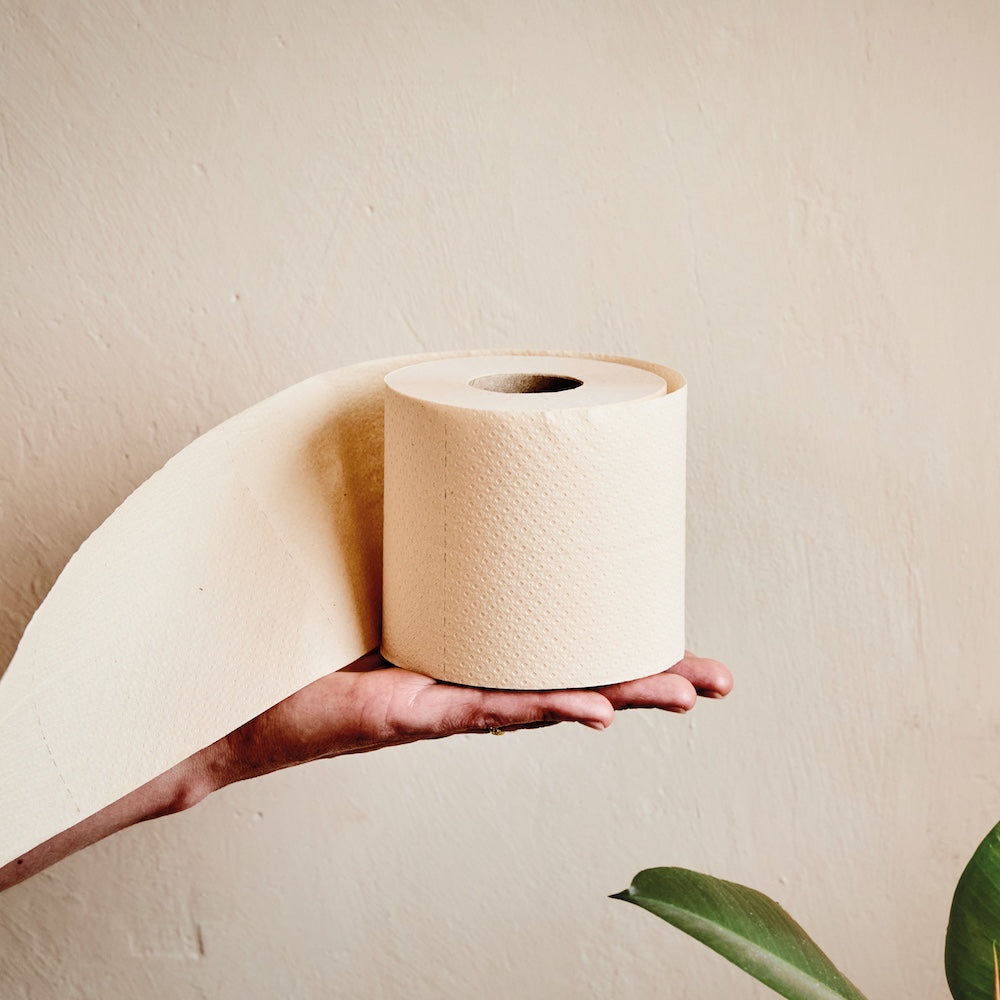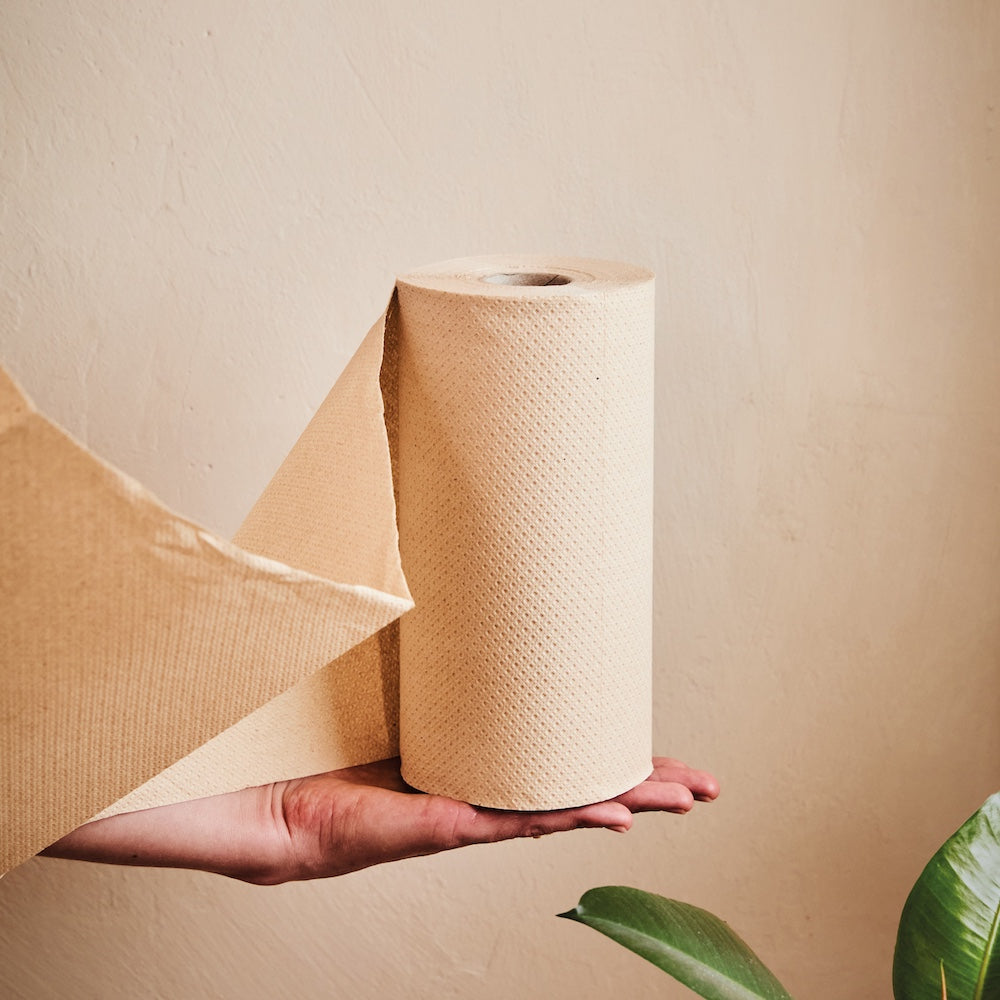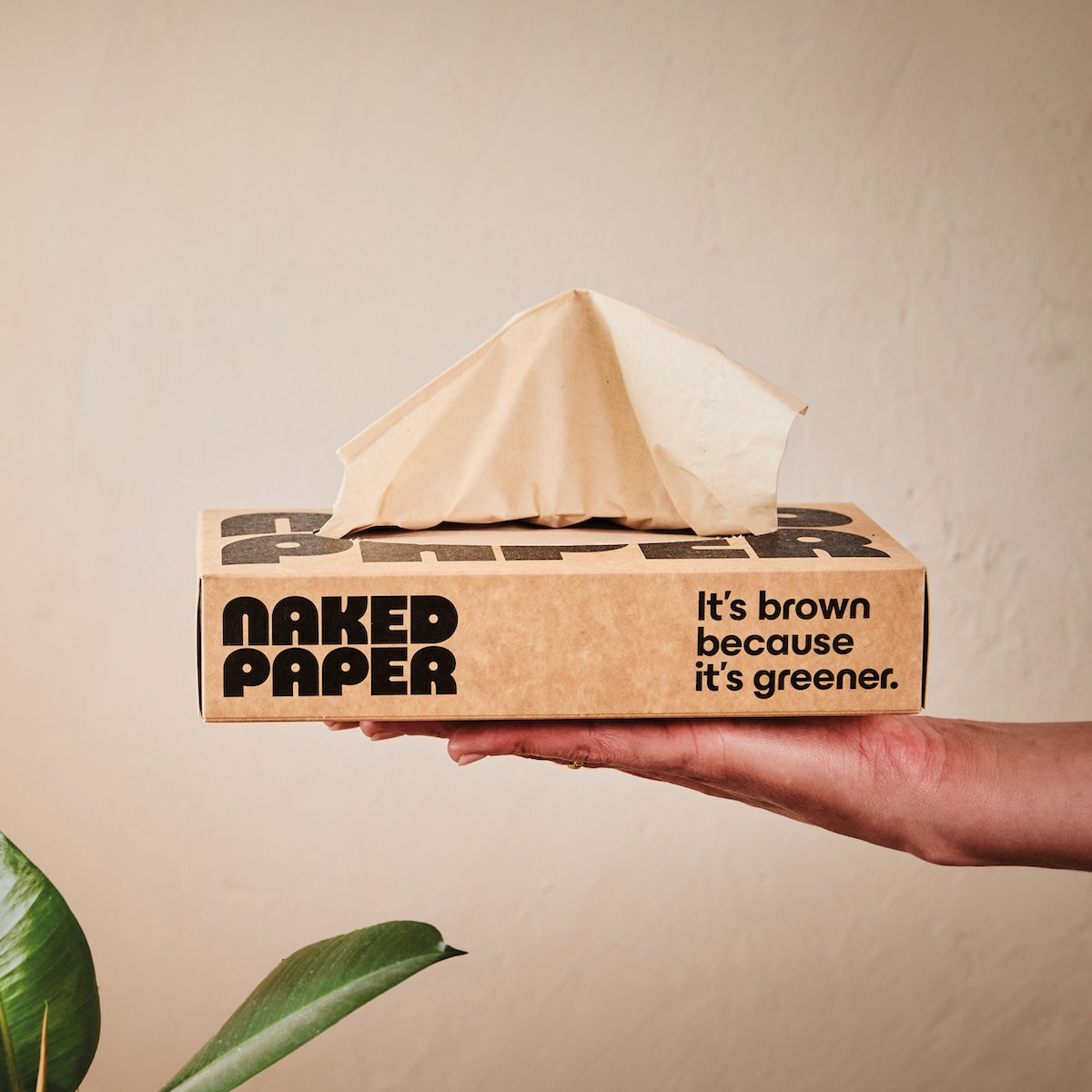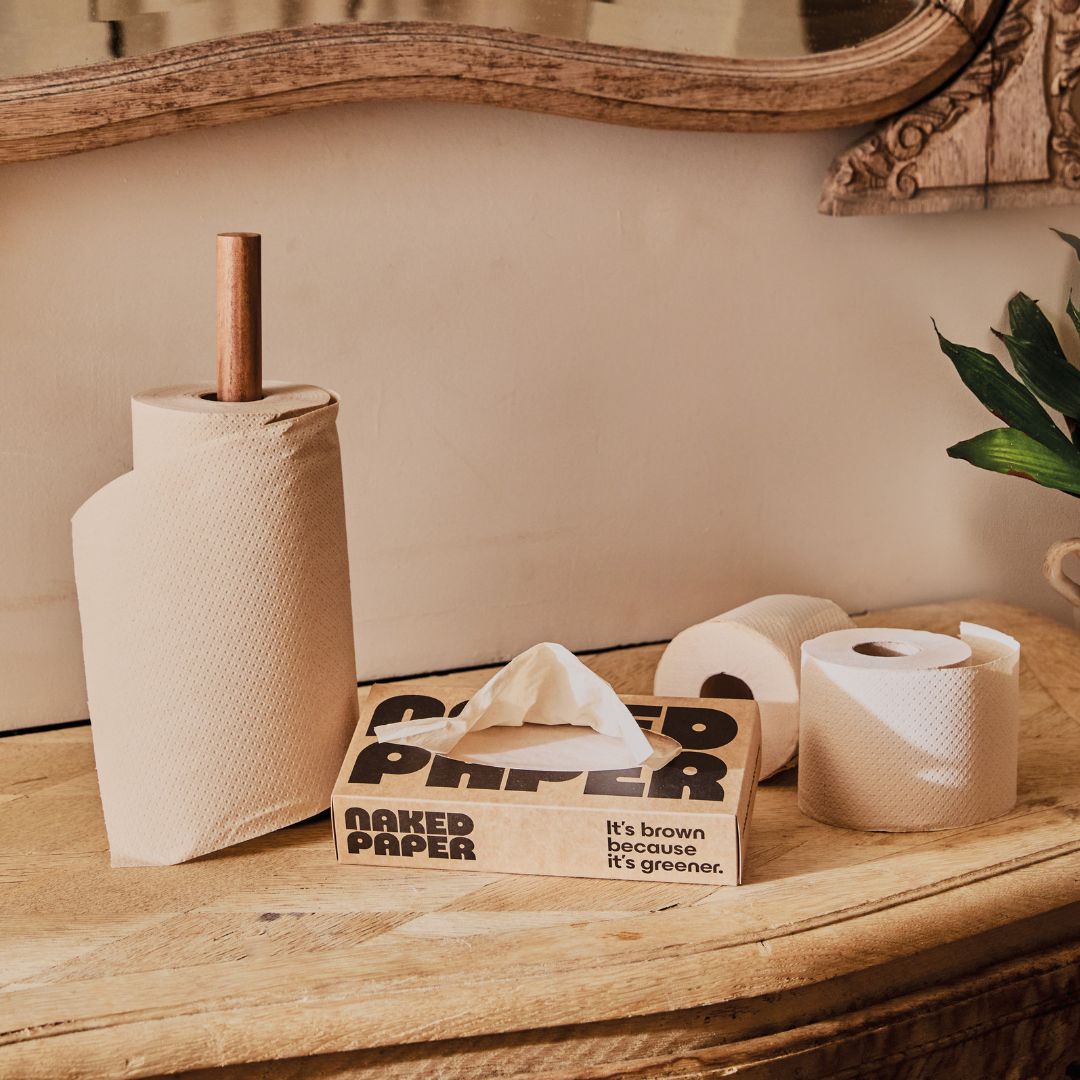Recycled toilet paper without the small print

Recycled toilet paper has a lot going for it. Loo roll is a disposable product most of us use every day; making it from stuff that goes in the bin feels like the obvious alternative to using fresh material.
But behind the green labels there’s a detail worth considering: where does the recycled paper actually come from?
You might be surprised to learn most recycled toilet paper unrolls with a hefty serving of small print.
What do we mean? Read on.

How most recycled toilet paper is made
Traditionally recycled toilet paper has been made from the pile of waste paper we throw away every day; office documents, leaflets, junk mail, even old receipts.
But these days a big part of that pile is missing. As reported by the Guardian in 2023, the rise of working from home, coupled with increasingly digital workplaces, means there’s less office paper being used, so there’s less to recycle.
And when there’s less recycled material available, big toilet paper manufacturers brands look elsewhere to keep up with demand.
Ethical Consumer found that many household brands have quietly increased the amount of virgin wood pulp in their tissue products to fill the gap. For example, the tissue and toilet paper company Kimberly Clarke, who make Andrex, dropped from 29% recycled content in 2011 to just 19.3% in 2021.
As the pile of everyday recycling shrinks, more trees are being farmed, usually in monoculture plantations, to make up for the shortfall.
And the drawbacks of the standard way of doing things don’t stop there. There’s more to consider when we look at the inks and chemicals used in printed documents.

Does recycled toilet paper have more chemicals?
When you collect a load of printed paper recycling, you’re not just getting the paper; you’re getting the print as well.
Office paper, newspaper, and magazines are made from bleached white paper that has been treated with inks and toners. In the case of thermal paper like till receipts and glossy brochures there’s the added complication of hormone-disrupting BPA to think about.
These chemicals don’t just disappear when this material is pulped and reformed as toilet roll. A 2011 study by the American Chemical Society found that recycled toilet paper and tissue products contained worryingly high levels of BPA; an invisible legacy of the paper used to make it.
The second problem with printed paper is easier to see. Take a load of printed reports and brochures, chop them up and mash them with water and what do you get? A load of grey pulp. Most people aren’t looking to buy grey toilet rolls, so to make their products appealing to customers, recycled toilet paper manufacturers will almost always bleach them.
This is why standard recycled toilet rolls are white. They’ve been put through a process designed to undo the appearance of recycling.
But the bleaching process has an impact on the environment as well as our bodies. Whether you’re using chlorine or peroxide bleach, those chemicals will need to be manufactured, packaged, and transported, and bleach in toilet paper has been linked with various minor and more serious health complaints.
Overall there’s three big problems with using printed documents to make recycled toilet paper:
-
There’s less of these documents to go round
-
The documents can contain traces of a range of chemical additives
-
The final rolls need to be bleached.
At Naked Paper, we think there’s a better way.

How we make recycled toilet paper without ink or bleach
When we started to make our own recycled toilet rolls at Naked Paper we made a decision. We didn’t want to be tied to a dwindling supply of printed paper and an unnecessary bleaching process.
So we decided to skip the small print.
Instead of using printed documents, we get our raw material from plain cardboard boxes and brown paper packaging.
These don't carry huge amounts of ink or toner. They don't have a thermal coating. And when you pulp them, they don’t make grey pulp. Our recycled pulp is brown, like the materials we make it from so there’s no need to involve bleach.
It’s a practical shift when we think about how we live our lives in the 2020s and common types of waste. Unlike printed office paper, there’s no shortage of brown cardboard and paper packaging. In fact, the boom in online shopping and home deliveries means there’s more of it than ever.
All of the paper and card we use to make our recycled products come from businesses located within 85km of our factory. It comes in large truckloads to our state-of-the-art recycling centre.
By recovering this abundant material, we’ve created a stable, sustainable supply chain that doesn’t involve dwindling collections, unnecessary chemicals, or bleach.

The best bleach free recycled toilet paper
After five years of questions about the colour of Naked Paper, we’d never deny that people are used to white rolls. Bleach has been the default for decades, and we get far more questions for skipping it than we would if we kept it in.
But bleached isn’t better; it’s just more processed. Our rolls are brown because that’s the natural colour of the fibre we use. We haven’t had to hide a load of small print to make them, and we can be open about the benefits to our planet, our bodies, and our wallets.
If you're on the same page, we've got good news. We’re working on recycled kitchen rolls and facial tissues made with the same no-ink, no-bleach approach. We’ll share some more updates on those very soon. But in the meantime…
Want to try recycled toilet paper without the small print?
Recent blog posts
-

Why we say "climate footprint" not "carbon footprint"
Our climate is changing as a result of the way people live, travel, and shop. And while everyone has a role to play in the transition to more sustainable ways of living, the bulk of the responsibility has to lie...
-

Unbleached, uncomplicated, unbelievably aligned
Sometimes things just fit together perfectly. Like a bleach free kitchen roll standing ready on a worktop made from reclaimed timber chippings. Our partnership with GS8 is a lot like that. GS8 are an award-winning developer and contractor of planet-positive...
-

Toilet paper for septic systems
If you’ve got a questions about toilet paper, we’ve got answers. Today we’re digging into a topic that might not occur to 96% of the UK population, but is critical to the other 4%. What is the best toilet paper...







